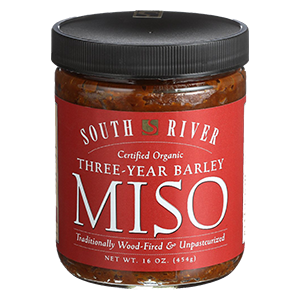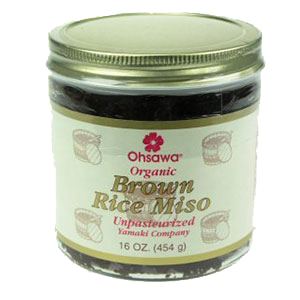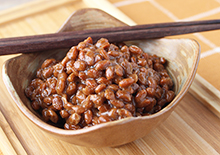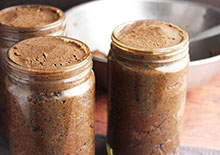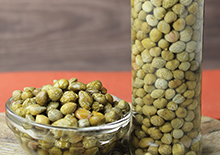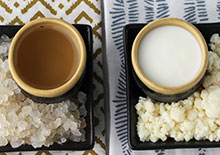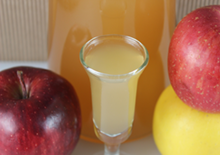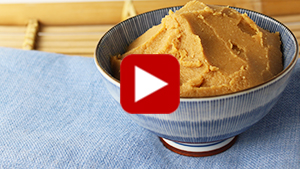- Home
- Fermented Foods
- Miso Paste
Miso Paste and Miso Soup (Misoshiru), The Top 11 Basics
What is Miso? | Is All Soy-Based? | Nutrition | How to Make Miso Soup | Ways to Use | History | Types | Short-Term Vs Long-Term | Famed Benefit | Making Homemade | Cons of Miso | Precautions | Shop
1) What is Miso?

Miso (pronounced mee-so) is a type of salty fermented bean paste customarily made with soybeans, salt and a culture starter called "kōji". While it is a popular condiment staple in Japanese cuisine, it is also used extensively in all parts of East and Southeast Asia especially China, Korea, Vietnam and Indonesia.
After a fermentation period, usually between several months to one year, the cooked beans develop a robust umami flavor and earthy shoyu-like aroma.
2) Is All Miso Soy-Based?
Table of Contents
What is Miso? | Is All Soy-Based? | Nutrition | How to Make Miso Soup | Ways to Use | History | Types | Short-Term Vs Long-Term | Famed Benefit | Making Homemade | Cons of Miso | Precautions | Shop
Yes, soybean is the main bean used in traditionally prepared miso and sold commercially on a large scale.
However, some people today are less attracted to eating soy-based products because of their soy isoflavones and phytoestrogen content.
The good news is that miso paste can be made from other beans, not just soy. While these are less common in Asian markets, a few modern American-style miso brands provide for this demand using legumes like garbanzo, adzuki and black bean.
3) Miso Paste Nutrition
The ingredients used to make miso are nutritionally enhanced after fermentation providing many of the benefits that fermented foods have to offer. This is only true for commercial products that are unpasteurized, which most miso’s currently are.
Miso paste is full of beneficial probiotic lactic acid bacteria and very high in enzymes. (*) These components can aid digestion, encourage bowel regularity and support a healthy gut microbiome.
The fermented paste is considered a live active food that is sensitive to high heat. So, steps are usually taken to avoid overheating which will destroy valuable nutrients.
The nutritional components of the beans and other ingredients used are essentially "predigested" due to the fermentation process, making them more bioavailable. Most types are sources of minerals, amino acids, choline, vitamin K and B vitamins.

4) How to Make Miso Soup (Misoshiru)
Miso paste is most popular for use in the classic "miso soup". Usually served with other ingredients like cubed tofu, green onions, shiitake and seaweed, but there are many optional variations depending on cultural and/or personal preferences.
Miso soup, called misoshiru (味噌汁), is a Japanese tradition. It is customarily prepared by adding the paste at the last minute to a dashi stock. This is to preserve its integrity as a fermented food. Basically, the liquid is never heated unnecessarily and kept well below a boiling temperature, typically around 140 ºF (60 ºC).
The dashi stock is commonly composed of two ingredients kombu or kelp seaweed and dried bonito fish flakes. When the soft miso paste is mashed into the dashi stock and dissolves, it produces the cloud-like effect that miso soup is known for.
Usually, about 2-3 Tablespoons of miso paste is suitable for one quart of liquid, but this is of course contingent on personal taste.
5) Other Ways to Use Miso
Miso can be used to add an umami salty flavor to most any type of soup, stew or vegetable stock.
The paste also makes a great base for spreads, sauces or marinades. Its robust dense flavor goes well in tahini and yogurt-based salad dressings, sweet and sour dipping sauces for sushi, homemade BBQ sauce and curry paste.
One of the original ways to use miso was as a condiment dollop stirred into grains or with other foods. It can be used as a salt replacement in many types of dishes and recipes.
6) History of Miso
The origin of miso dates back thousands of years and has a very interwoven history with other ferments produced in both China and Japan such as shi and kokusho.
The paste-like version of miso we know today was further developed and perfected by the Japanese.
By the Edo Period (1603–1868) the use of miso paste was common in many households and homemade miso variations were spread across many diverse regions of Japan. They were the first to use it as a paste in soup broth, inventing the classic miso soup varieties.
The macrobiotic health movement, which was popularized by Japanese teacher George Ohsawa in the 1960s, played a significant role in introducing miso to the Western world.
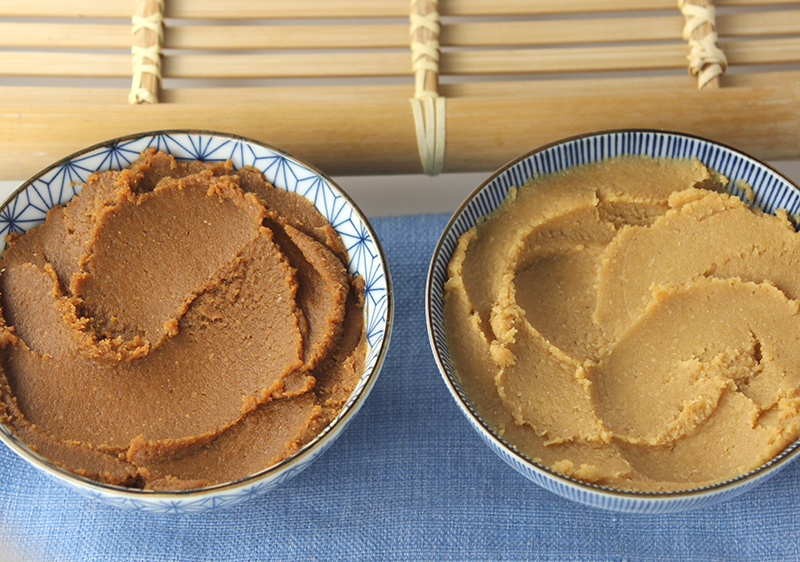
7) Types of Miso Paste
Preparing miso is an artisan craft, like making fine wine, and East
Asian cultures are the miso masters. The methods and ingredients used
can vary considerably depending upon the type of miso and regional
style.
There are basically 3 different groups that miso can be classified under. These are referred to as:
1) Regular - Using different koji starters, either rice (kome), barley (mugi) or soybean (mame).
2) Special - These are two types called "finger lickin" and "sweet miso."
3) Modern - Can refer to low-quality commercial varieties as well as finely crafted ferments using other types of legumes besides soybean.
"Regular miso" is by far the most common variety and is fermented
with different types of koji substrate, either rice, barley or soybean.
When
rice koji starter is added it becomes "kome miso", when barley koji is
added it becomes "mugi miso" and when soybean culture is added it
becomes "mame miso."
Miso using rice koji is called "kome miso" and accounts for nearly 80% of all miso paste consumed. The two most common types are white miso and red miso.
8) Short-Term Miso Vs Long-Term Miso
Miso's fermentation period may differ greatly depending on variety and is often evaluated according to how long it has aged.
Short-term miso, like white miso, is cultured between 2-8 weeks and has a sweeter flavor and light color. Long-term miso, like red miso, is aged a minimum of 6 months but can extend to 3 years or even longer. These types are typically a much darker red-brown color.
Generally, the longer ferments can develop much richer taste and unique flavor profiles, a bit like when aging wine or cheese. Likewise, these long-term misos are also known to have greater health-supporting compounds.
9) Famed Health Benefit of Miso Soup
Although not completely evidenced by science, miso soup is famous for its reputation at reducing acute radiation-induced illnesses. This was first observed in the 1945 Nagasaki bombing in Japan by Dr. Akizuki working at St. Francis Hospital just 1.4 kilometers from the hypocenter.
While seaweeds in the soup can also offer this influence, it is
believed that substances produced during miso fermentation are closely
related to its radioprotective support.
According to research on mice, this potential is believed to be more prominent in long-term miso ferments. In addition, miso soup and its concentrated substances is suggested to be most helpful when already present in the body before exposure.
10) Making Homemade Miso Paste
We have been making our own red miso for well over 15 years from garbanzo and black bean instead of soy.
All miso uses a koji starter, which is the essential ingredient required to make homemade miso. This is steamed grain, usually rice or barley, that is inoculated with the Asperigillus oryzae mold culture needed for the fermentation process. In the U.S., you can buy it from online suppliers or at some Asian markets.
Making the miso itself is a fairly simple process, using minimal ingredients. It can be made in a professional fermentation crock using weights or in any type of large gallon glass jar or crock-like vessel. The basic ingredients include: cooked beans, rice koji, a small amount of mature miso, bean broth and sea salt.
The hard part when making DIY miso is the waiting period. We recommended at least 6 months, but in our experience, a one or two-year miso is the best in taste quality.
11) The Cons of Miso
One of the obvious cons about eating too much miso is that it is a high
sodium food. According to nutrition fact labels taken from some popular organic American brands, salt content can range from 230mg / one teaspoon to 830mg / one Tablespoon.
Serving Size = Amount of Salt
1t = 230mg of salt, 9% DV
2t = 480mg of salt, 20% DV
3/4T = 540mg of salt, 23% DV
1T = 830mg of salt, 35% DV
(Daily Value Based on an adult 2,000-calorie diet.)
There have been some scientific reviews reporting that the salt content in miso may not increase blood pressure when compared to its salt equivalent.
Nevertheless, while its presumably better than straight refined table salt, it should generally be avoided on no-salt diets.
Precautions:
Consult your health care professional before adding miso to the diet if you are pregnant, nursing, taking any medication or have a medical condition.
Shop Related Products (About Affiliates & Amazon Associate Paid Links)
Affiliate Disclaimer: This section contains affiliate product links. If you make a purchase through our recommended links, we receive a small commission at no additional cost to you. Thanks for the support.

